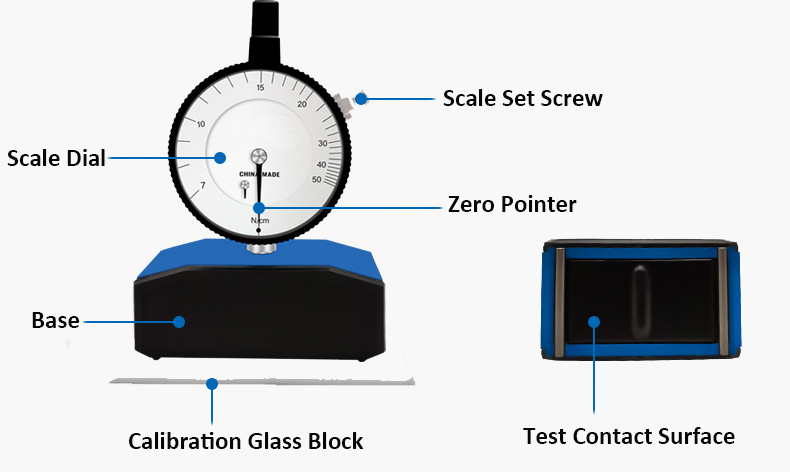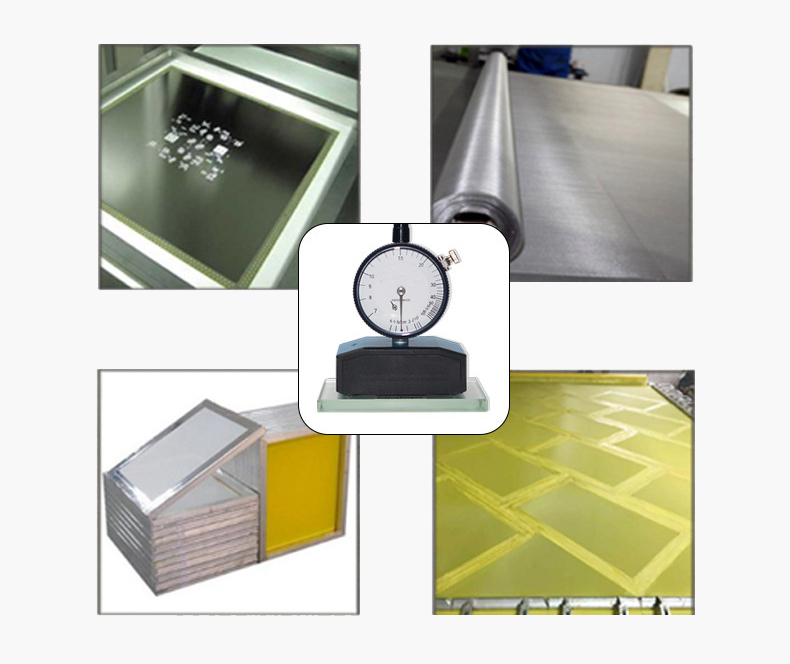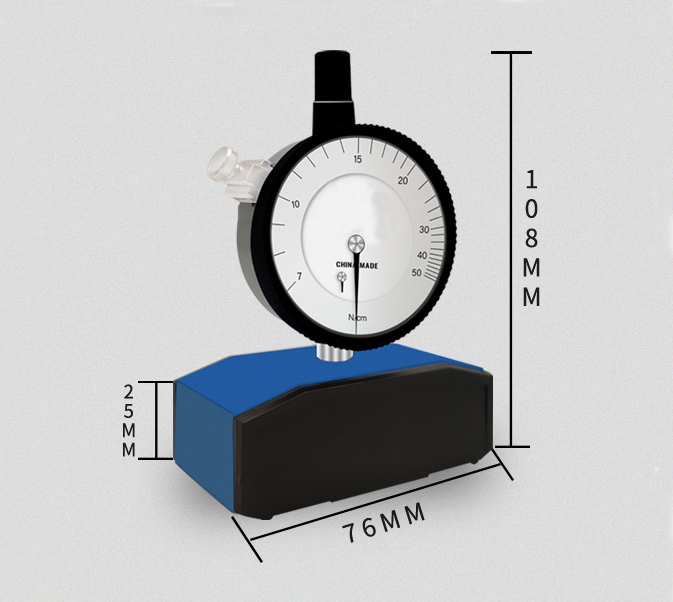Buy a screen tension meter online with an accuracy of ±5% of full-scale, resolution 1N. The silkscreen tension meter is suitable for high-tension silk screen and stencil tension measurement, with high accuracy, it is an ideal tester for making a precision stencil and steel stencil.

Screen tension meter with 7-50N/cm measuring range.
- Very easy to use and accurately checking the tension of the mesh is the best tool for checking tension when stretching.
- Used for testing the mesh tension of N/cm which is a very dependable and affordable accuracy tool, with no adjustment necessary.
- Item also includes a good packing box Good for screen printing stretching mesh and applying proper tension to make good quality long lasting frames.
Applications
Tension meters are instruments that measure tension in cable, fiber, belts and webs, or sheets. sisco tension meter mainly used in belt tension measurement can also be applied to measure the tension of objects such as tapes, and wires. Widely applied in industries of automobile, textile, cables, wires, plastic films, paper, and printing.

| Model | SISCO-AG7-80 |
| Measuring Range | 7-80 N/ cm |
| Measurement error | ±5% full range |
| Operating Temperature | 10℃~50℃ |
| Transport Temperature | -5℃~70℃ |
| Units of Measurement | N/cm |
| Measurement Accuracy | 1N |
| Meter Size | 76*42*108mm |
Dimension

Q1: What is a tension meter?
A1: A tension meter is a device used to measure tension in wires, cables, textiles, Mechanical belts, and more. Meters commonly use a 3-roller system where the material travels through the rollers causing deflection in the center roller that is connected to an analog indicator or load cell on digital models. Single-roll tension sensors and sonic tension meters are other types of tension meters. Tension may also be inferred from the frequency of vibration of the material under stress by solving the "Vibrating String Equation". Tension meters are available as handheld devices or as equipment for fixed installations. These are basically necessary to build up a tension-controlled closed loop.
Q2: What is the purpose of the tension meter?
A2: A tension meter is a device used to measure tension in wires, cables, textiles, Mechanical belts, and more. Meters commonly use a 3-roller system where the material travels through the rollers causing deflection in the center roller that is connected to an analog indicator or load cell on digital models.
Q3: How does a tension meter work?
A3: Tension meters measure the dynamic tension in a moving yarn and regulate the tension of the yarn on a winding machine. Tension sensors are dynamic tension devices. The piezoelectric element mounted on a flexible beam is the most important part of tension sensors.
Tips: Tips for using a silk screen tension meter
- When the tensiometer is placed on the calibration glass, the pointer reading is zero. Generally, the pointer reading is not zero when picking it up. Some people do not put the tensiometer on the calibration glass, just pick it up and see that the pointer is not zero. The instrument is broken. Or not, it is wrong to directly adjust to zero calibration in this way.
- It must be placed on the calibration glass and adjusted. How to place the stencil tensiometer: Place the non-printed side of the stencil on a horizontal platform.
Place the entire tensiometer steadily on the mesh surface 15-20cm from the edge of the outer frame, and pat the surface of the steel mesh with your fingers a few times. At this time, the reading pointed by the pointer is the actual tension (Newton reading) of the current steel mesh.
Thank you for buying industrial test and measurement equipment on SISCO.com, all products sold by SISCO and the partner cover a 12 months warranty, effective from the date of receiving the products.
What is covered?
SISCO is responsible for providing free spare parts, and free technical support to assist the customer to repair the defective products until the problem is solved.
What is not covered?
- Product purchased from anyone other than a SISCO store or a SISCO authorized reseller.
- Expendable parts.
- Routine cleaning or normal cosmetic and mechanical wear.
- Damage from misuse, abuse or neglect.
- Damage from use of parts other than SISCO approved.
- Damage from use outside the product’s usage or storage parameters.
- Damage from use of parts not sold by SISCO.
- Damage from modification or incorporation into other products.
- Damage from repair or replacement of warranted parts by a service provider other than a SISCO authorized service provider.
- Damage caused by the application environment not meeting the product usage requirements and the failure to perform preventive maintenance.

